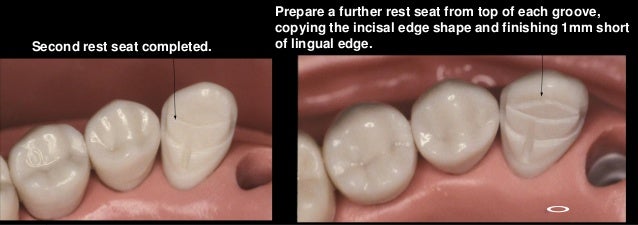Maryland Bridge Tooth: Restores Smile Quickly

When it comes to missing teeth, the impact on one’s smile and overall dental health can be significant. A Maryland bridge tooth is a type of dental restoration that can effectively address this issue, providing a quick and effective solution for restoring one’s smile. This type of bridge is particularly favored for its conservative approach, as it requires minimal modification to the adjacent teeth, making it an ideal option for patients seeking a less invasive treatment.
Understanding the Maryland Bridge
A Maryland bridge, also known as a resin-bonded bridge, is designed to replace a missing tooth by bonding a prosthetic tooth to the back of adjacent teeth. This technique is especially useful for replacing missing front teeth, where aesthetics is a primary concern. The procedure involves preparing the back of the adjacent teeth, taking impressions, and then fitting the bridge into place. The bridge consists of a false tooth (pontic) that is attached to metal wings, which are bonded to the back of the neighboring teeth using a strong adhesive.
Benefits of a Maryland Bridge Tooth
Aesthetic Appeal: One of the primary benefits of a Maryland bridge is its ability to restore a natural-looking smile. The prosthetic tooth is designed to match the shape, color, and texture of the surrounding teeth, ensuring a seamless integration into one’s dental appearance.
Minimally Invasive: Unlike traditional dental bridges that require significant preparation of the adjacent teeth (enamel removal to support the bridge), Maryland bridges are more conservative. They require less alteration of the natural teeth, making them a preferred choice for patients looking to preserve as much of their natural tooth structure as possible.
Quick Procedure: The process of getting a Maryland bridge is relatively quick compared to other dental restoration methods. It typically requires only a couple of visits to the dentist, with the first visit involving preparation and impression taking, and the second visit for the fitting of the bridge.
Cost-Effective: In comparison to implant-supported bridges or full dentures, Maryland bridges can be a more cost-effective option for tooth replacement. They offer a durable and long-lasting solution without the higher upfront costs associated with some other dental restoration methods.
Functional Improvement: Beyond the aesthetic benefits, a Maryland bridge also helps in restoring the functionality of the teeth. It facilitates better chewing and speaking, and can help prevent the shifting of adjacent teeth, which can lead to more complex dental issues if left untreated.
Procedure for Getting a Maryland Bridge
The process begins with a consultation with a dentist to discuss the feasibility of a Maryland bridge for the patient’s specific condition. If deemed suitable, the procedure involves:
- Preparation: The dentist prepares the back of the adjacent teeth to receive the bridge. This involves lightly etching the surface to create a better bond between the tooth and the bridge.
- Impression Taking: Impressions of the teeth are taken to create an accurate model. This model is then used to fabricate the Maryland bridge.
- Try-In: Before the final cementation, the bridge is tried in the mouth to ensure a proper fit and make any necessary adjustments.
- Cementation: The bridge is then bonded to the back of the adjacent teeth using a special adhesive.
Post-Procedure Care
To ensure the longevity of the Maryland bridge, proper care and maintenance are essential. This includes regular brushing and flossing, avoiding hard or sticky foods that could dislodge the bridge, and scheduling regular dental check-ups. With proper care, a Maryland bridge can provide many years of service, restoring not just the functionality of the teeth but also the confidence that comes with a full and healthy smile.
Conclusion
A Maryland bridge tooth offers a versatile and effective solution for addressing tooth loss, particularly for those seeking a minimally invasive procedure with rapid results. Its aesthetic appeal, combined with the functional benefits and conservative approach, make it a popular choice among patients and dentists alike. As with any dental restoration, consulting with a professional is key to determining the best course of treatment tailored to one’s specific needs and oral health status.
How long does it take to get a Maryland bridge?
+The process typically requires two visits to the dentist, with the first visit for preparation and impression taking, and the second for the fitting of the bridge. The entire process, from consultation to final fitting, can usually be completed within a couple of weeks, depending on the complexity of the case and the laboratory turnaround time.
Is a Maryland bridge suitable for everyone?
+While a Maryland bridge is a versatile option for tooth replacement, it may not be suitable for everyone. The success of a Maryland bridge heavily depends on the health and stability of the adjacent teeth, as well as the patient's overall oral health. Patients with significant tooth decay, gum disease, or those who grind their teeth may not be ideal candidates. A thorough dental examination is necessary to determine the best course of treatment.
How durable is a Maryland bridge?
+A well-cared-for Maryland bridge can last for many years. The average lifespan is around 10 to 15 years, but with proper maintenance and regular dental check-ups, it's not uncommon for these bridges to last longer. Factors such as the patient's oral hygiene habits, diet, and the accuracy of the bridge's fit play significant roles in determining its durability.
In conclusion, a Maryland bridge tooth is a reliable and efficient dental restoration option for individuals looking to restore their smile without undergoing extensive dental work. Its combination of aesthetic appeal, functional benefits, and conservative approach makes it a highly sought-after solution in modern dentistry.


